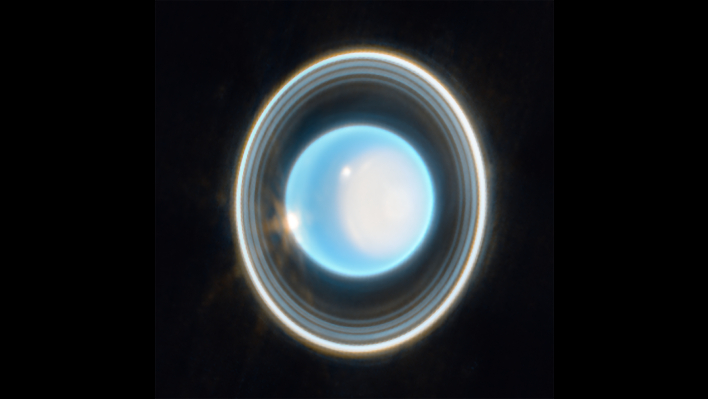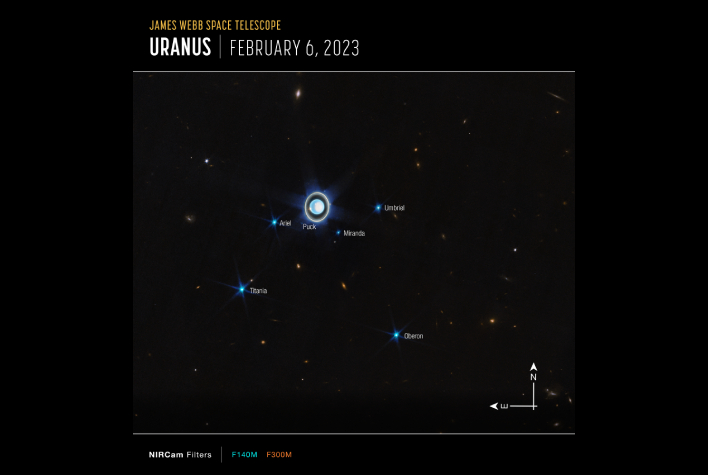NASA Probes Uranus With A Giant Telescope To Unlock Secrets Of A Mysterious Mechanism

When someone thinks of Uranus, they don't typically think of it as having rings around it. But the seventh planet from the Sun, which is rare in that it rotates on its side, was the second to be found with rings after Saturn. James L. Elliot led the team that discovered the ring system in 1977, nine years before the Voyager 2 flyby. Jupiter's rings were discovered in 1979 and Neptune's in 1989. Now, JWST is giving researchers an even more detailed look at the planet's rings and atmosphere.
Uranus has 13 known rings, with 11 of them being visible in the image from Webb. Nine of the rings are classified as the main rings, while two are the fainter rings that evaded detection until the Voyager 2 flyby in 1986.
The latest image from the space observatory uses its Near-Infrared Camera (NIRCam), combined with data from two filters at 1.4 and 3.0 microns (shown in the image as blue and orange). In comparison, Voyager 2's camera captured an "almost featureless blue-green ball in visible wavelengths." Webb is able to see Uranus with its infrared wavelengths in much higher detail.
The fact Uranus rotates on its side causes extreme seasons. It takes 84 Earth-years to orbit the Sun, causing the planet's poles to experience extended periods of time in both darkness and light. The image from JWST shows the planet during late spring for the northern pole, with its northern summer not arriving until 2028.
Webb was able to unveil a unique aspect of Uranus' polar cap (an area of brightening at the pole facing the Sun), which NASA described as "a subtle enhanced brightening at the center of the cap." The polar cap is unique to Uranus and seems to only appear when the pole is in direct sunlight in the summer years and disappears during the fall. JWST's new data will aid scientists in gaining a better understanding of this rare mechanism.
NASA says that Webb has only shown "the tip of the iceberg" in terms of what it can do when observing Uranus. The National Academies of Sciences, Engineering, and Medicine indicated that Uranus should be a high priority in 2022, meaning there will surely be more highly detailed observations of the ringed planet by JWST and other observatories to come.


